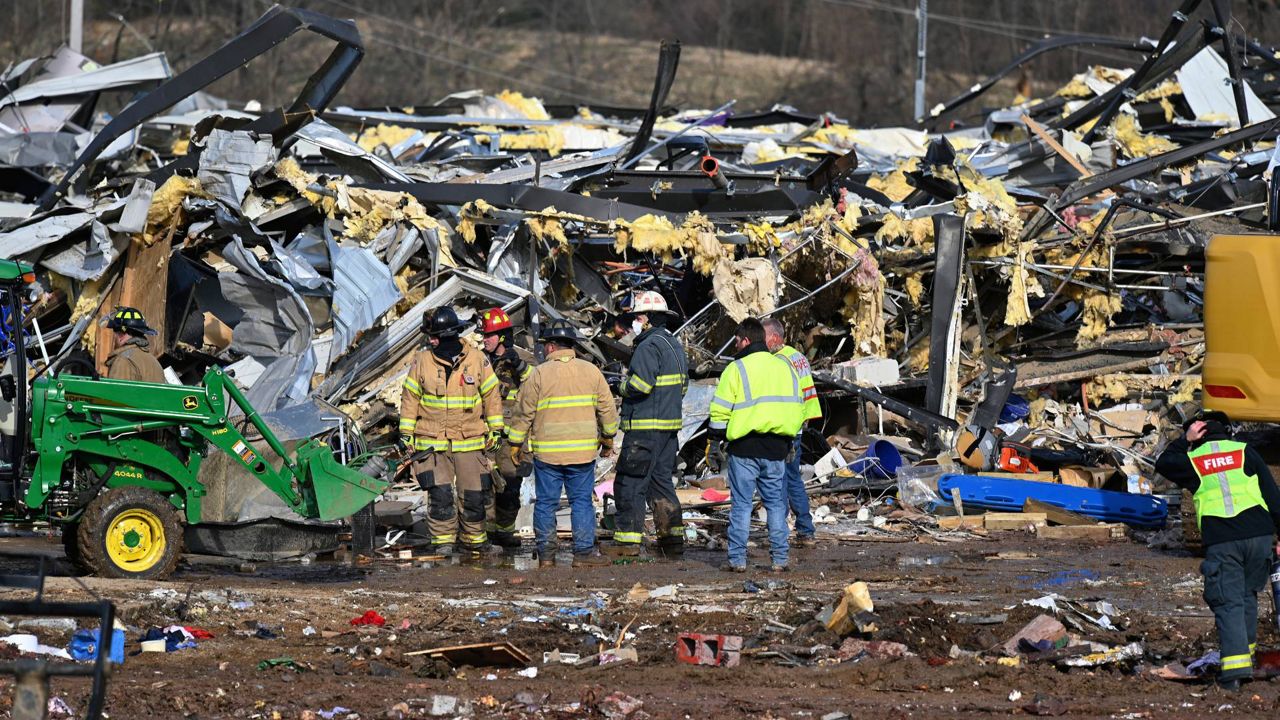COVINGTON, Ky. — Gov. Andy Beshear declared a state of emergency early Saturday after a deadly storm and a tornado leveled portions of western Kentucky overnight.
What You Need To Know
- Kentucky was one of several states impacted by a powerful storm and series of tornadoes that ripped through the Midwest
- Kentucky suffered devastating losses, including at the lives more than 70 people; damage was greatest along the west portion of the commonwealth
- Ky. Gov. Andy Beshear declared a state of emergency to activate a variety of federal and state resources
- The state of emergency activated by the Kentucky Transportation and Cabinet and the Kentucky National Guard
The storm and a series of tornadoes ravaged several at least five states, but the Bluegrass State was among the hardest-hit spots. The death toll in Kentucky is expected to be "north of 70” but could rise to around 100, Beshear said during one of his multiple updates on Saturday.
One tornado, which began in Arkansas, ripped across more than 200 miles of Kentucky. It was the longest tornado track on record and the largest in state history, Beshear said.
At least 10 Kentucky counties were affected, including Graves County, located along the southwest border of the commonwealth. Graves County is home to the city of Mayfield, which saw a large portion of its downtown leveled over the course of the storm.
Bowling Green, Ky. saw extensive damage. Western Kentucky University, in Bowling Green, said it experienced significant issues with its campus networks and phone lines. The university had to cancel commencement ceremonies scheduled for Saturday.
In response to the devastation, Beshear issued a formal state of emergency. A natural disaster like the one on Saturday is a typical example of an instance when a governor will declare a state of emergency. Doing so provides the state with temporary access to various resources and powers that aim to protect residents and continue operations.
As part of his order, Beshear activated the State Emergency Operations Center and the State Emergency Operations Plan. Those are important tools for the establishment of a coordinated response by all state agencies and private relief organizations.
The governor requested the deployment of a federal Incident Management Assistance Team to assist with command and control operations.
A state of emergency declaration is also a prerequisite for requesting federal funds that can be vital to both stabilization and recovery efforts. Beshear's office sent a letter to President Joe Biden, through the Federal Emergency Management Agency (FEMA) on Saturday, requesting emergency federal assistance.
Biden said in a statement that he was “in touch with state and local officials as the search for survivors and damage assessments continue.”
I have spoken directly to @POTUS, @SecMayorkas and @FEMA_Deanne about my request for a federal emergency declaration this morning for Kentucky. I appreciate the President’s swift response during our time of need. We are committed to helping the people of Western Kentucky recover.
— Gov. Andy Beshear (@GovAndyBeshear) Dec. 11, 2021
As part of the state of emergency, Beshear activated the Kentucky National Guard along the western portion of the state and other impacted areas. More than 180 members of the National Guard are on scene and on route, assisting with search and extraction as well as debris clean up.
Areas throughout the state continued to deal with quality-of-life issues hours after the storm had finally gone quiet. As of Saturday afternoon, there were still thousands of residents and businesses without power.
“At this time, it is apparent there is a need for emergency generators to power critical facilities. I ask for a Power Assessment Team to identify specific needs and sourcing," Beshear said in his request to the White House.
Beshear also reached out to the Kentucky Transportation Cabinet to deploy heavy equipment for the removal of wreckage and debris.
The governor advised residents to avoid areas and roads where crews are assisting with emergency operations.



